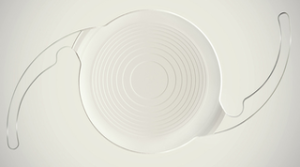ADULT CATARACT SURGERY
 Cataract surgery should be considered when the cataract is causing visual symptoms such as blurred or reduced vision, difficulty with reading or night driving, glare and distortion that are interfering with daily life.
Cataract surgery should be considered when the cataract is causing visual symptoms such as blurred or reduced vision, difficulty with reading or night driving, glare and distortion that are interfering with daily life.
The decision to proceed with cataract surgery varies from patient to patient depending on circumstances such as lifestyle and activities, general health and desire to keep a driving licence.
How is a cataract treated?
Modern cataract surgery is a microsurgical procedure performed in a day surgery centre under local anaesthesia. It may be performed with laser (see below, FLACS) or without (standard cataract surgery). An intraocular lens (IOL) is implanted within the eye during surgery to replace the power of the natural lens that is removed. A variety of IOL’s are available. The type chosen depends on factors such as your visual needs and lifestyle.
Our ophthalmologists are highly skilled in modern techniques.
Small incision phacoemulsification surgery
This is the most common procedure to remove a cataract. After the pupil is widened with eye drops, you will be taken into the operating theatre. The eye is covered with a sterile drape. Your surgeon will perform the operation looking through an operating microscope. A small incision approximately 2.4 mm long is made through the cornea. The cataract is emulsified via an ultrasound probe and then aspirated from the eye. A foldable acrylic artificial, IOL is then implanted. The procedure takes about 30 minutes.
Click here for more information.
Femtosecond laser assisted cataract surgery (FLACS)
Femtosecond laser assisted cataract surgery is a recent development in cataract surgery. The laser is used prior to standard phacoemulsification cataract surgery in selected cases to create precise tissue planes and pre-soften the cataract. It’s main advantages are a greater level of precision and repeatability and faster lens fragmentation.
Evidence that FLACS offers better outcomes than non-FLACS small incision phacoemulsification cataract surgery for standard cases with a basic monofocal (non-toric) IOL is lacking however, it may improve safety and patient outcomes in select cases such as mature/advanced cataract, astigmatism or patients with pre-existing corneal disease.
Our surgeons are fully trained to use the Catalys Precision Laser System (Abbott Medical Optics) at Victoria Parade Surgery Centre. FLACS is not covered by Medicare so the cost is an additional out of pocket expense.
See the following video for more information:
Intraocular lenses (IOL)
A variety of types of IOL are available: monofocal aspheric, toric (correct astigmatism), extended depth of focus (EDOF), accommodating and multifocal. Each has its advantages and disadvantages. There are additional costs for most premium IOL’s.
During your preoperative consultation, your surgeon will discuss which IOL best suits your needs.
